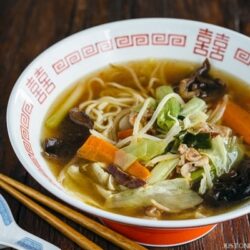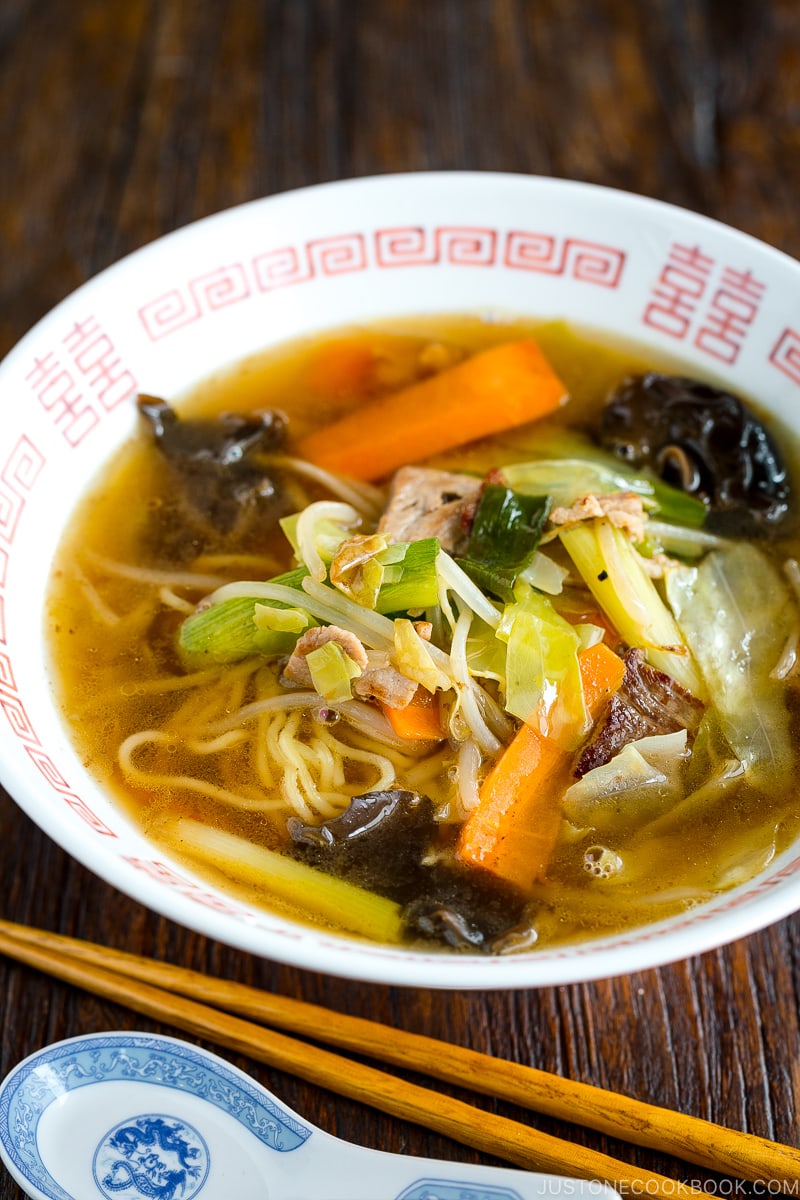
When I am too busy, tan-men is one of the quick ramen menus I serve at home. You have hearty yet light soup and chewy noodles with some vegetables and meat. Compared to heavy ramen broth, tan-men is light and easy on your tummy. Tan-men or sometimes known as Tan Tan Ramen was featured on the popular Japanese TV program called “Shinya Shokudo (深夜食堂)” or “Midnight Diner: Tokyo Stories” which is now available on Netflix.
An Episode of Tan-Men from Midnight Diner: Tokyo Stories
Midnight Diner features Japanese dishes that are more representative of home-cooked recipes than Japanese restaurant menus in the US. If you’re interested in Japanese home-cooked meals, you will enjoy this show as much as I do!
Tan-Men episode is Season 1, Episode 1 on Netflix.
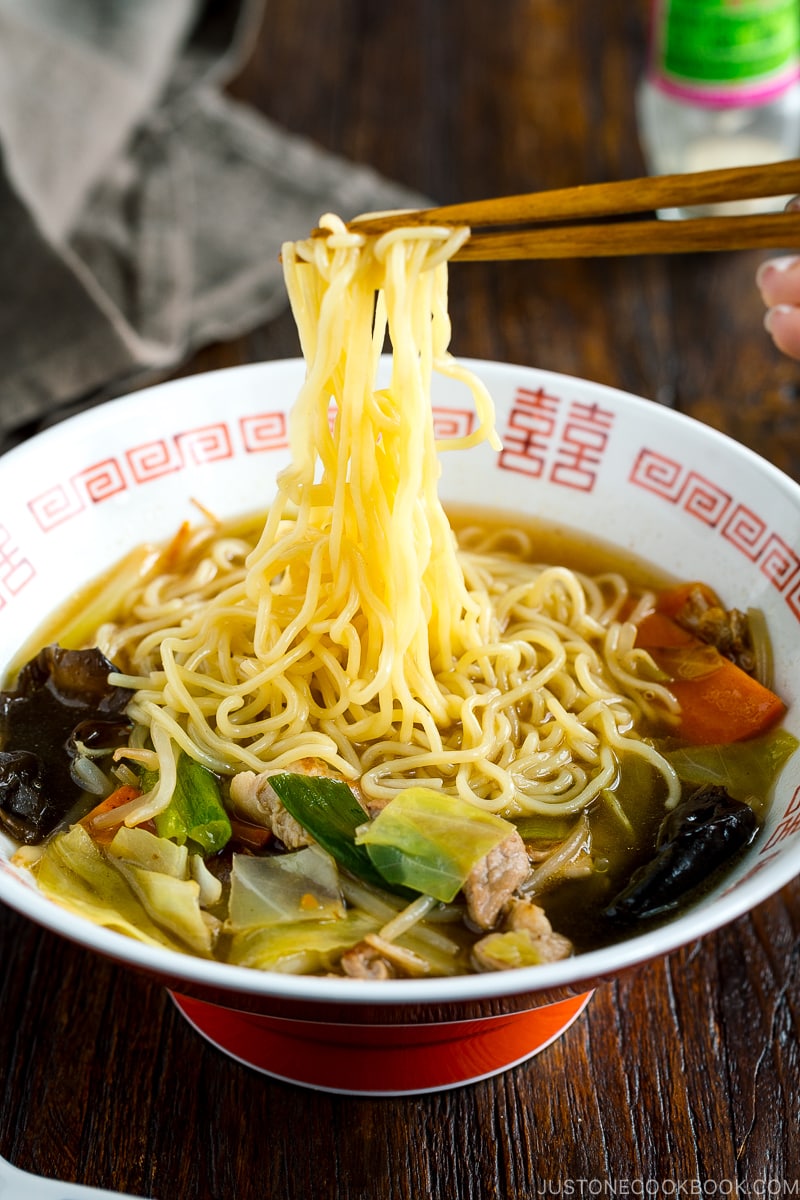
Introducing Chuka-Dashi Powder
Fun Fact: It’s actually not common to make chicken stock from scratch in Japan because it’s not easy to find chicken bones or whole chicken at local Japanese grocery stores. Therefore the Japanese use the Chuka Dashi Powder (中華だし) to make Asian (especially Chinese) cooking. Do you know what this is?
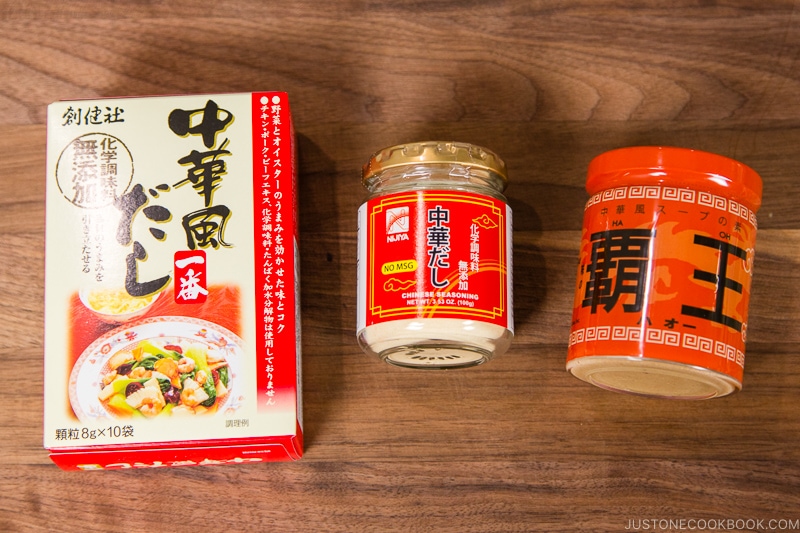
While Japanese dashi is typically made of kombu, bonito flakes, and/or anchovies (read this detailed post about dashi), Chuka (meaning “Chinese” in Japanese) Dashi is basically the soup (湯) that is made with chicken, pork, and/or oyster or clams, for making the soups or the sauces in Chinese cooking.
Just like Japanese dashi powder, you need to dissolve chuka dashi powder in hot water to make the soup stock. This seasoning is sometimes sprinkled over stir fry dishes to give some additional flavor.
In case you’re wondering, dashi powder in Japan is mostly MSG-free.

Asian vs. Western Chicken Stock
Recommendation: When you make Asian food with chicken stock, I highly recommend using chicken stock made with simple chicken, ginger, and green onion (and garlic), and not western chicken stock made with carrots, onions, or other vegetables in it. As you can imagine, the chicken stocks taste very different.
You can purchase a can of chicken stock like these in Asian grocery stores.
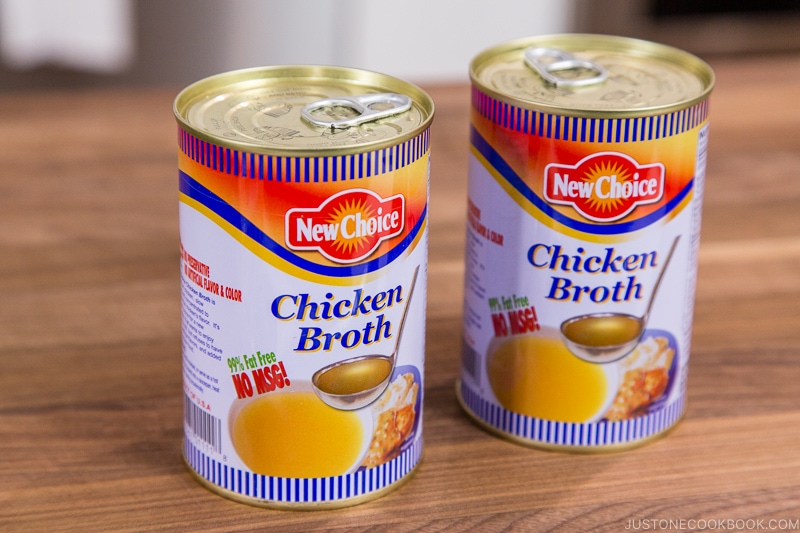
However, I know many of you prefer making stock from scratch, so here’s a quick tutorial on how to make Homemade Chicken Stock.
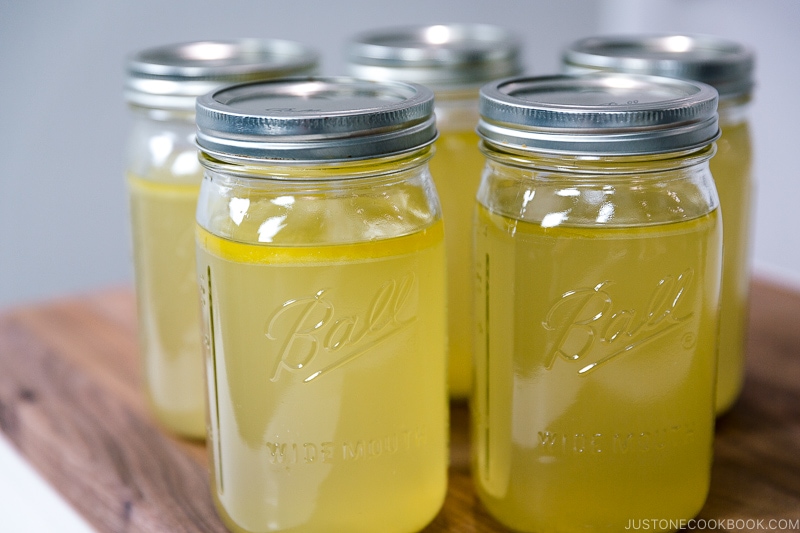
Ingredients for Tan-Men
Meat: Usually sliced pork belly is used in Tan-Men. You can find these sliced pork belly in Japanese, Korean, or Chinese grocery stores. They look like bacon but they are raw and not cured. You can substitute it with other kinds of meat.
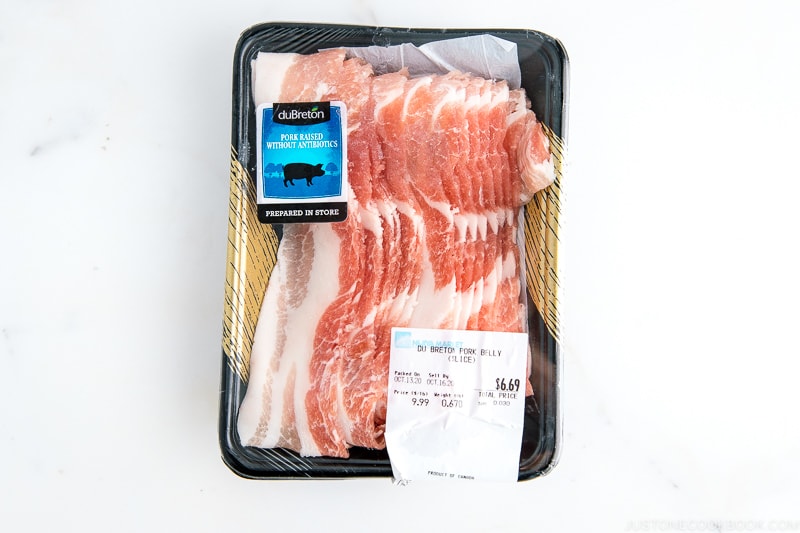
Vegetables/Mushrooms: Typically these five ingredients are used. Cabbage, carrot, bean sprout, green onion, and dried wood ear mushrooms. Dried wood ear mushrooms are often found in Chinese dishes, and it is mainly added for the texture. It comes in a big package so you could omit it if you don’t plan to use it for other recipes. But it’s a fun ingredient to experiment with and makes the dish more authentic.
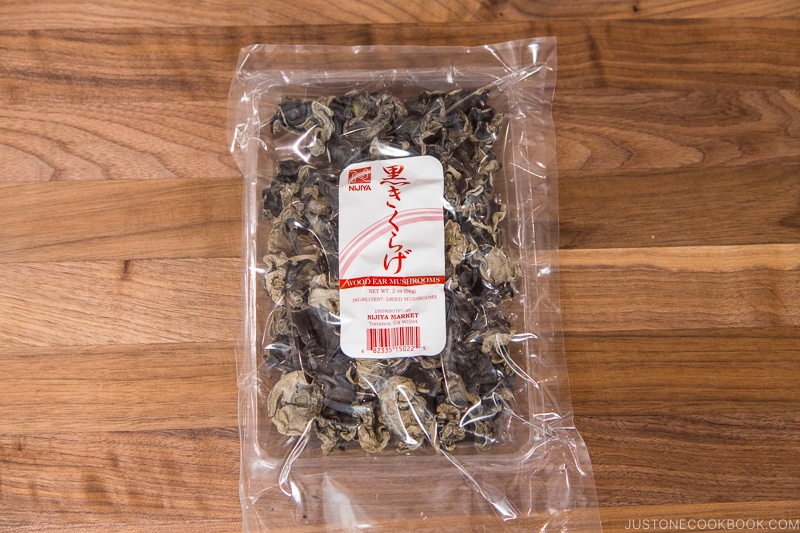
Noodles: I used noodles from Tan-Men package I purchased at my local Japanese grocery store. You can use ramen noodles or Chinese-style noodles.
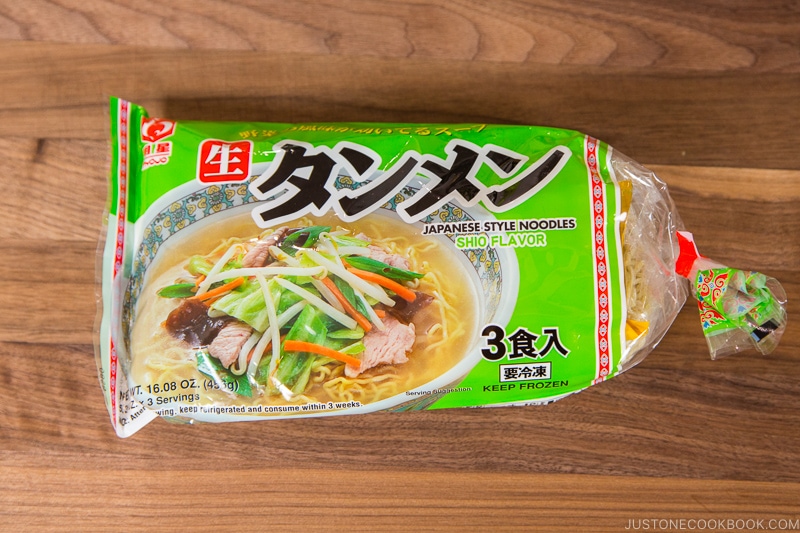
In the Tan-Men episode of the Midnight Diner series, some customers ask the master (the chef at the diner) to make Tan-Men without noodles because they are eating at late night. Tan-Men has lots of vegetables in the soup and it’s quite fulfilling. But I have no willpower to eat Tan-Men without noodles. How about you?
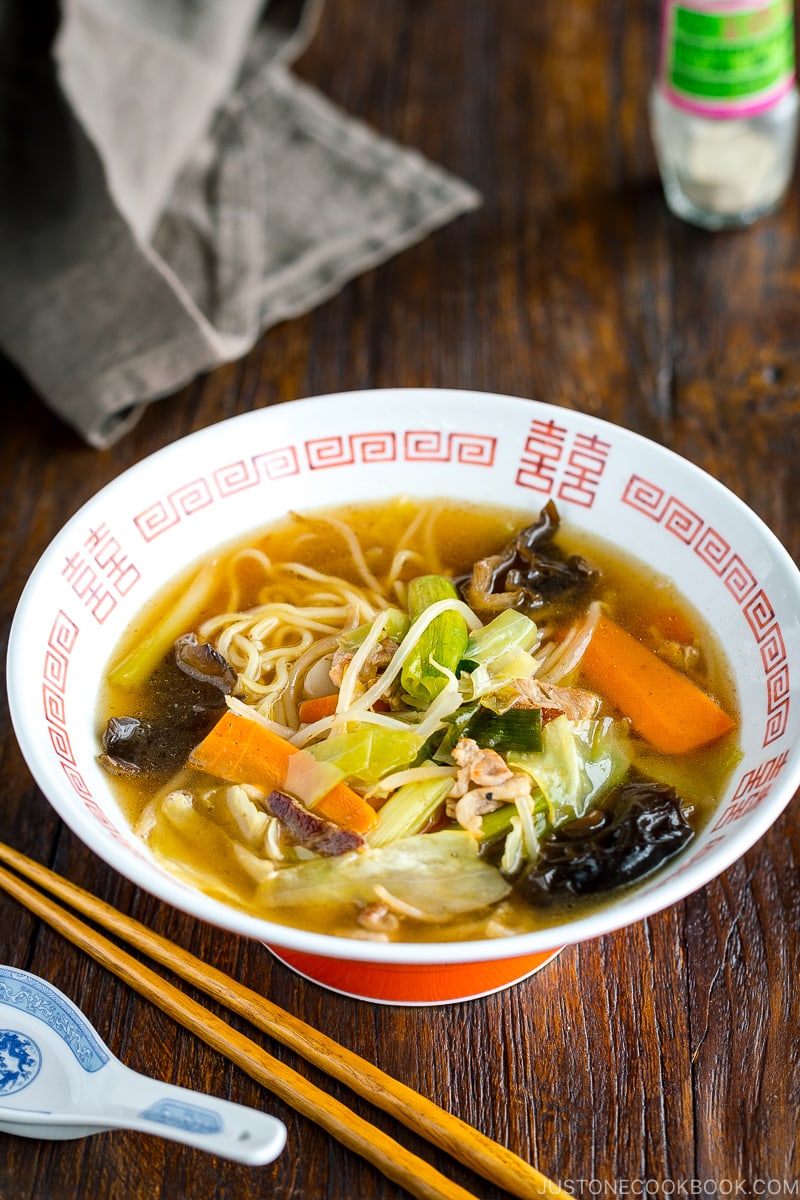
Other Japanese-Style Chinese Dishes
- Mapo Tofu
- Pork Shumai (Steamed Pork Dumplings)
- Beef & Green Pepper Stir Fry
- Nikuman (Steamed Pork Buns)
- Black Sesame Dan Dan Noodles
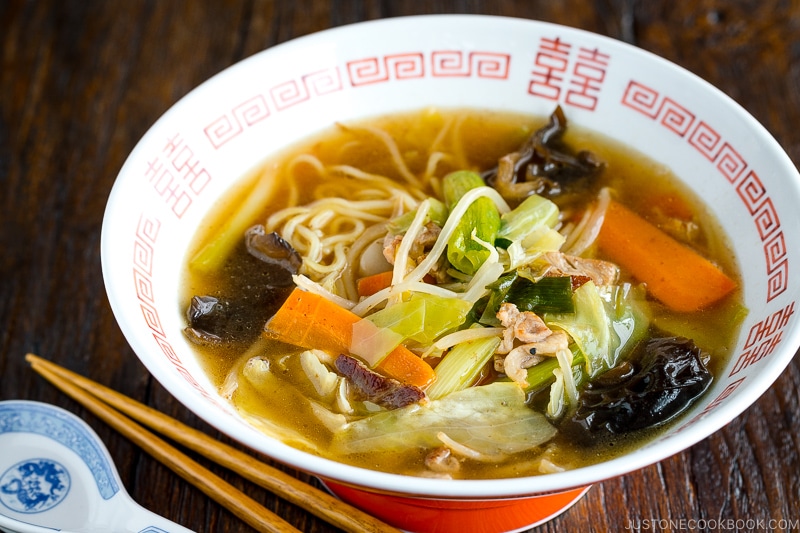
Wish to learn more about Japanese cooking? Sign up for our free newsletter to receive cooking tips & recipe updates! And stay in touch with me on Facebook, Pinterest, YouTube, and Instagram.
Tan-Men
Ingredients
- 6 pieces dried wood ear mushrooms (0.14 oz, 4 g)
- 3 green onions/scallions
- 4–5 leaves green cabbage
- 2 inches carrot
- 4 oz bean sprouts
- 1 Tbsp neutral oil (for stir-frying)
- 4 oz sliced pork belly
- 1 Tbsp sake
- ⅛ tsp freshly ground black pepper
- ¼ tsp Diamond Crystal kosher salt
- 1 tsp toasted sesame oil
For the Noodles
- water (for boiling the noodles)
- 2 servings fresh ramen noodles (10–12 oz or 283–340 g fresh noodles)
For the Chicken Stock (3⅓ cups or 800 ml) (see Notes for homemade stock)
- 4 tsp Chuka Dashi (Chinese seasoning) (for my homemade recipe, please click here; please read the blog post about Asian chicken stock vs. Western chicken stock; it‘s recommended to use Asian chicken stock for this recipe)
- 3⅓ cups water (hot)
Instructions
- Gather all the ingredients.
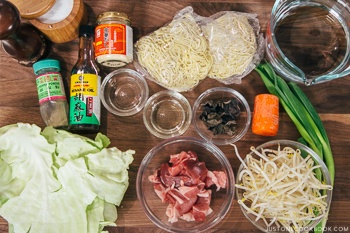
To Make the Soup
- In a medium saucepan, dissolve 4 tsp Chuka Dashi (Chinese seasoning) in 3⅓ cups water (hot). Mix well and bring to a boil, then set aside. Alternatively, you can use my homemade chicken stock recipe.
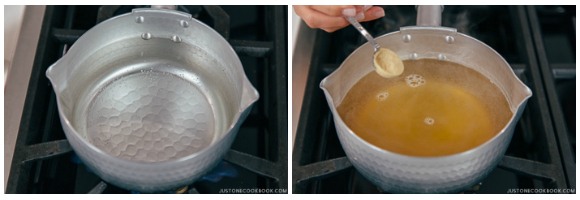
To Prepare the Ingredients
- In a small bowl, add 6 pieces dried wood ear mushrooms and add just enough water to cover them. Rehydrate until soft and squeeze to remove the water. Cut 3 green onions/scallions into 2-inch (5-cm) pieces.
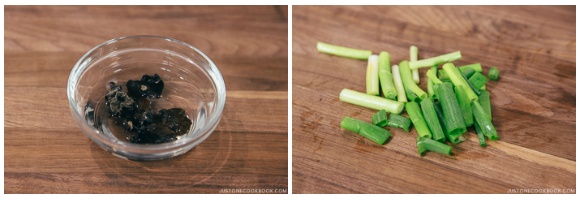
- Cut 4–5 leaves green cabbage into bite-size pieces. Cut 2 inches carrot into thin slabs and then cut them in half. Rinse 4 oz bean sprouts under running water.
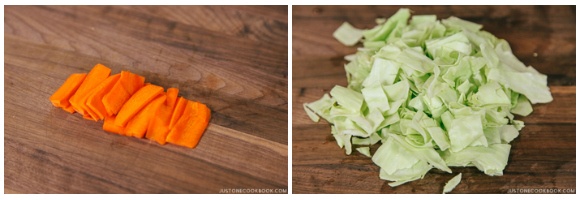
To Cook the Toppings
- Start preparing a big pot of water to cook noodles. While waiting, heat the wok or large frying pan on medium-high heat. Once it’s hot, add 1 Tbsp neutral oil and swirl the oil around to coat the wok. Then, add 4 oz sliced pork belly and cook until no longer pink.
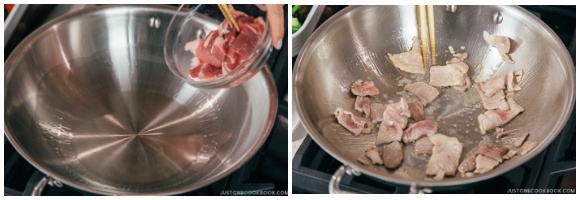
- Add 1 Tbsp sake to the meat and quickly stir. Then, add the wood ear mushrooms, green onion, and carrot.
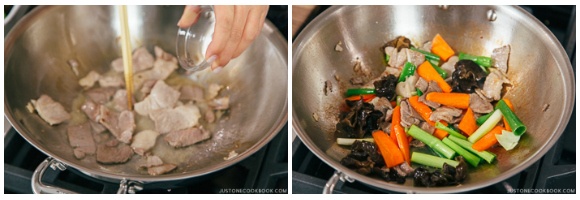
- Add the cabbage and bean sprouts.
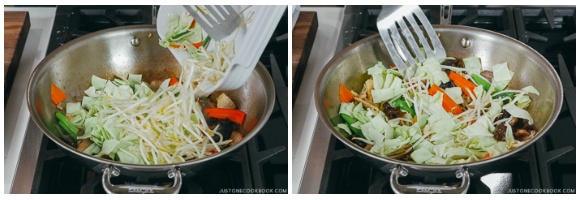
- Season with ⅛ tsp freshly ground black pepper and ¼ tsp Diamond Crystal kosher salt.
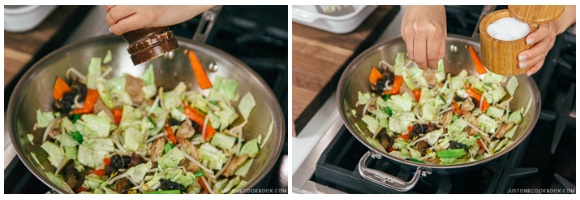
- Once the cabbage is tender, add the chicken stock and 1 tsp toasted sesame oil and bring to a simmer.
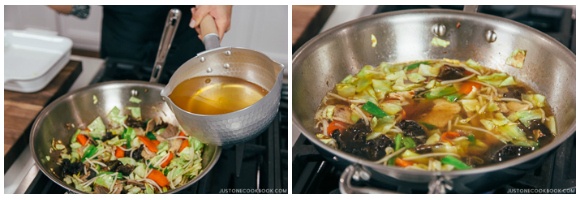
To Cook the Noodles
- When the water is boiling, add 2 servings fresh ramen noodles by loosening them up with your hands. Cook the noodles according to the package instructions and drain well.
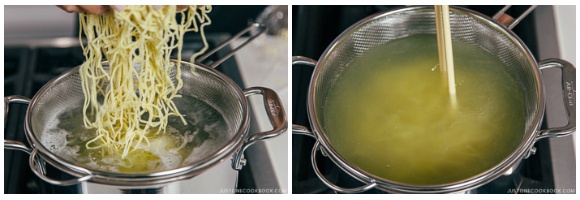
To Serve
- Divide the cooked noodles into two bowls. Add the toppings and soup over the noodles and serve immediately.
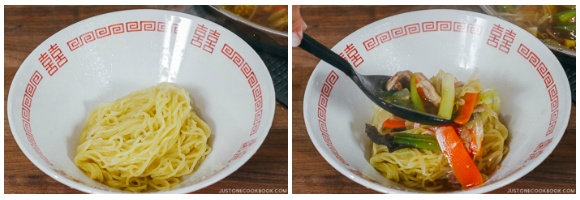
- A dash of white pepper is great for enhancing the noodles‘ flavor.
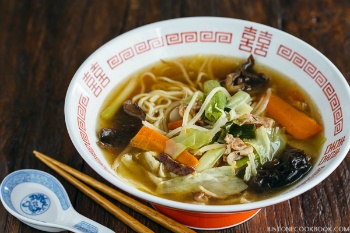
To Store
- Keep the leftovers in separate airtight containers: the toppings, soup, and noodles (uncooked). Store them in the refrigerator for up to 3 days or in the freezer for a month. Cook the noodles right before you serve.
Nutrition
Did you make this recipe?
Tag @justonecookbook on Instagram so we can see your delicious creation!


